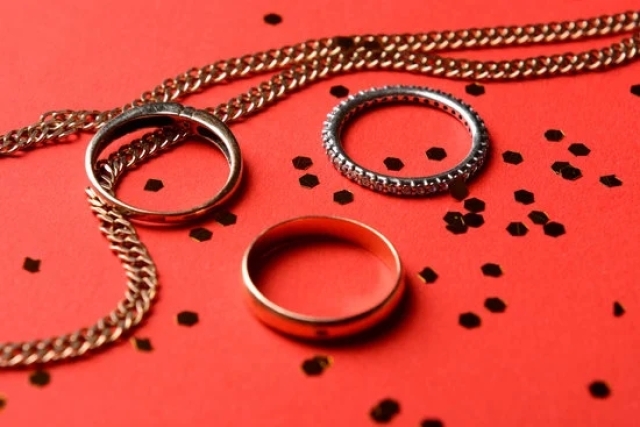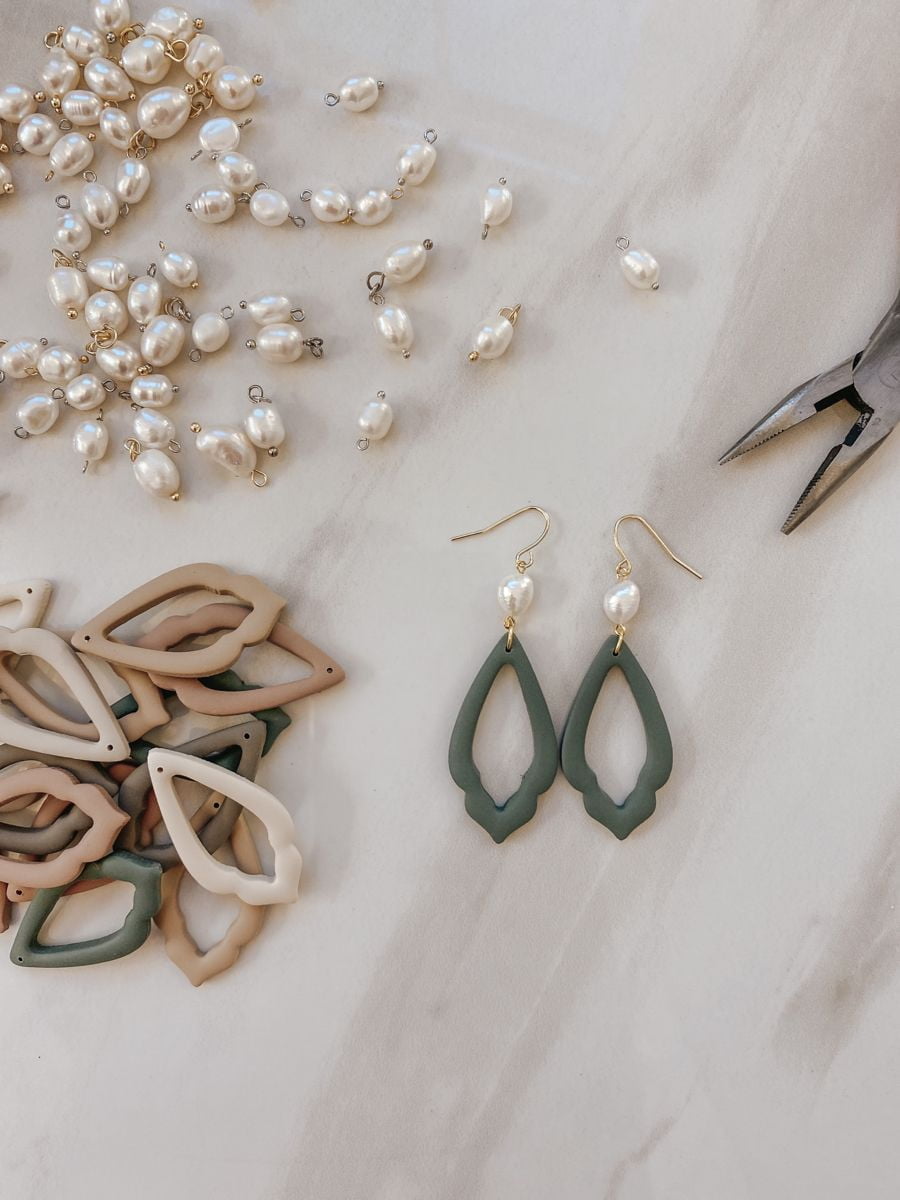Africa inspired metal jewelry is unique and bold. From the ingenious and colorful adornments of the Tuareg tribes of North Africa to the everyday, stunning tribal-infused pieces of Ghana, it’s easy to see why this style of jewelry is popular around the world. As travelers continue to explore African culture, they will uncover rewards that stretch far beyond what they expected.
Not only are these exquisite pieces an incredible way to represent the diversity and beauty of African nations, but its versatility makes wearing them effortless. Not only does each piece tell a unique story from different regions in Africa, they also provide one with a way to add personality and elegance to any outfit.
Tribal-inspired metals are typically created from lightweight materials like silver or brass and then finished with intricate designs such as shapes, symbols and emblems from various tribes in Africa. Each culture has its own distinct stories & meanings attached to their pieces making each item special in its own way.
For instance, tumbaga jewelry originating from Colombia fuses two different metals such as gold & copper together to form delicate yet eye-catching items. Additionally, some Mauritanian jewelry is made by using desert stones & shells for the decorative accents which adds another layer of texture & depth to each piece that can’t be matched by any other type of accessory.
African-inspired metal jewelry often features bold colors and unique patterns which makes it impossible not to stand out while wearing it. In addition, these statement pieces waken up any ensemble instantly by adding life & zest that can never be achieved with typical western styles alone.
Whether you are looking for a subtle reminder of Africa within your wardrobe or trying to add a little edge onto any outfit, African inspired metal accessories checks all those boxes. With options ranging from traditional necklaces & earrings made using traditional techniques or contemporary artworks aimed at urban populations; this style certainly offers endless possibilities no matter what aesthetic you are striving for.
Ancient Traditions
African metal jewelry has a long and fascinating history that spans many centuries. From its origins in Ancient Egypt where it was used to symbolize power and leadership, to the expansion of Islamic influences across North Africa, to its eventual entry into Europe during the colonial era, African metal jewelry is deeply rooted in many cultures around the world.
The designs worn by Africans are a benchmark for intricate metalwork due to their interplay of ancient techniques being adapted and preserved over countless generations. The original Africans developed techniques like lost wax casting which allowed them to craft incredibly detailed objects from pure gold or silver.
This type of metalworking spread across North Africa into sub-Saharan territories before it was adopted by other areas such as France and England during the oral trading era. Early Europeans who sailed to colonized lands were introduced to African brass jewelry with intricate decoration including symbols, motifs, geometric shapes and animal forms.
Though modern African metal jewelry often takes a more minimalist approach than its predecessors due to changing trends within fashion industry, contemporary designers are taking cues from methods used throughout history to create pieces that incorporate traditional skills into their own unique expressions.
Dynamic pendants crafted using mixed metals are popular amongst contemporary designers, as are meticulously complex necklaces composed of several elements including gold-plated beads or crystals which are highlighted by designs etched onto brass pendants – all part of an innovative combination between cultures that celebrates Africa’s impressiveMetalworks background combined with global artistry trends.
Jewels stitched with vivid ethnic fabrics featuring elaborate embroidery work have always been essential components of African style in fashion circles both locally and on an international scale but they are currently being pushed even further than before by creative amalgamations involving materials like leather alongside woven patterns from multiple regions.
Whether its shape shifting earrings fashioned from semi precious stones or sustainable bangles made up from recycled metals – African metal jewellery continues to be produced with finesse through modern day alterations that echo its heritage inspired foundations making these timeless jewels an everlasting statement piece for anyone who loves being adorned in one-of-a-kind luxury.
From the Earth to the Creative Soul
Metal jewelry is a traditional form of jewelry and art making in Africa, with methods passed down from generations to generations. African metal smiths have developed their own unique techniques that are used in crafting intricate pieces.
For example, one method of design involves creating patterns or decorations on the metal that reflects an important element of the culture, such as an animal motif or tribal symbols. Metal smiths also use specialized tools and techniques to manipulate the gold and silver into complex and beautiful forms.
The metal smith works on metals such as copper, brass and gold that is often sourced by traditional African mines or suppliers. Once acquired, the process of softening the metal begins with heated ovens known as forge furnaces where extreme heat softens the metal so it can be prepared for forming, hammering and cutting depending on what type of jewelry is being crafted.
For a more organic effect, wire-drawing tools are used to draw fine lines into soft metals which adds texture and character detailing from bands to rings.
Stamping tools are then used to press figures into the metals after they have gone through filing, sawing and heat treating stages. These figures can include animals like birds or other African wildlife designs but also geometric patterns that feature chevron, diamond shapes or loops giving each piece its own unique look.
Finally brushing processes ensure any rough edges are smoothed making each piece durable enough for everyday wear yet still vibrant enough to create strong cultural identity with our jewelry pieces when they make it onto the market.
The challenge behind creating high-quality metal works lies in understanding how temperature impacts workability when using different types of metals but also manipulating them until desired results are achieved while pushing for process growth with every piece made over time leading to some amazing outcomes over time fostering lifetime generational bonds between craftsperson’s and their African inspired creations.
Crafting Meaning
Africa Inspired metal jewelry is a modern take on traditional African symbols and motifs. By mixing metals in unique ways, artisans create captivating, contemporary pieces taken from the rich culture of the continent. Whether in the form of rings, necklaces, pendants or earrings – these pieces are an artistic representation of age-old customs.
The symbolism behind Africa inspired metal ornaments ranges from religious beliefs to creatures found in nature – and each piece tells its own story. One of the most acclaimed designs is the Obba, a symbol that stands for protection within Nigerian culture. In Yoruba mythology Obba is associated with motherhood and fertility, while in Benin it is believed to represent prosperity and peace. Crafted into beautiful adornments using gold tones, these symbols provide comfort and luck to their wearers.
The practice of making Africa inspired metal jewelry dates back thousands of years when various tribal cultures developed adornments for special events such as births and weddings. Today’s collections feature designs which are just as meaningful, but crafted with modern and creative nuances such as unusual techniques or edgy materials like stainless steel. Ultimately the design process takes into account tradition as well as current trends to develop timeless pieces steeped in cultural heritage.
Particularly noteworthy amongst this genre of AfricanJewelry is the abundance of reverence displayed towards certain animals which have been granted special protection by various African tribes over generations. From elephants to mountain lions – each animal signifies something particular for their respective cultures; power for Lions or death-birth cycles represented by snakes are all reinterpreted into enduring forms through intricate metalwork jewelry crafting processes.
It’s no wonder then why these prized pieces remain so highly sought after by collectors around the world looking to make a statement amid their outfits with historical African-inspired handmade jewelry.
Substantial Adornments
African metal jewelry has been around for centuries upon centuries. This trend has recently seen a resurgence in Western fashion. From intricate designs of gold to bold interpretations of brass, African metal jewelry is an impressive statement of strength and unique individual expression. There is more than just a fashionable uniqueness to this style, however. Each piece and material tells a story within the culture that crafted it.
The practice of designing metal jewelry in Africa dates back thousands of years and found its way into the adornment rituals as well as various religious customs. In what is now modern Egypt, metal jewelry can be traced back to 2500 BCE when copper was used for many worn pieces.
Though some designs have remained the same over time, they’ve evolved with the changing cultural influences as people from all over traveled through Africa’s locales seeking new experiences and new perspectives on life.
Gold has always played a significant role in African jewelry culture, as it symbolizes power, prosperity and prestige within African communities. Certain shapes and patterns are particular to specific areas-a visual map indicating where an individual or family comes from-while others draw influence from Islamic art or traditional motifs native to many African cultures such as abstracted animals or plants like butterflies and flowers which become engravings on earrings or pendants made within West Africa specifically.
Brass is also used more extensively here as well due to its affordability which makes brass rings one of the most popular items besides the tribal necklaces favored across much of Southern Africa. Because West African nations already have centuries-old reputations for vibrant colors and functional yet elegant aesthetics, these cuts often take shape around intricately hand-beaded strands that pull together all sorts of semi-precious stones among other ornate accents.
Gaining an understanding of how each piece in Africa inspired metal jewelry ties into its culture helps form a clearer picture about the gravity this craft holds for many Africans at home and abroad who treasure the opportunity adornment brings between differing ethnicities-creating bonds instead of walls between kindred communities whose members share common threads like creativity.
Communities Connected Through Metal
For centuries, African craftsmanship has celebrated the diverse traditions and creative expressions of Indigenous resilience in African artistry. African inspired metal jewelry is a testament to the innovation and originality of the many cultures which make up the continent’s vibrant tapestry. From the golden rings of Mali to the symbolic brass charms from Nigeria, this type of jewelry is perhaps best known for its intricate designs that bring together various materials such as gold, silver, copper, and brass.
The metals used to create African inspired jewelry have significant cultural meaning along with aesthetic appeal. Gold symbolizes divinity and wealth within many African societies. In Sudanese culture, for example, Ethiopian crosses constructed out of gold are often worn for good luck or protection against curses and evil spirits.
Similarly, silver is treasured by some tribes for its reflective qualities which are believed to reflect away negative energy or ill-will directed at a person wearing it. Both gold and silver are also highly durable metals which venerate strength and longevity.
In addition to their spiritual symbolism, metals like copper have also been used by artists as an embellishment on traditional jewelry made with other materials such as feathers and bones. This creates a unique kaleidoscope effect as light reflects off of colorful beads or shells that frame copper charms hung from strands of yarn or thick leather cords meant to be worn around the neck.
Copper in particular holds special meaning in many African cultures due to its antimicrobial properties providing increased protection from illness and infection – especially valuable during pre-modern medicine periods.
Finally, brass adds a unique contemporary touch as it is uniquely malleable compared to more accessible metals like steel or aluminum making it easy for generations of crafters to manipulate into complex geometric shapes that will endure through time while still being very affordable relative to economic opportunity among sub-Saharan nations today.
The Global Dissemination of African-Inspired Jewelry Today
Africa-inspired jewelry has become increasingly popular in recent years. This type of jewelry has always been associated with African culture, but it is now being worn around the world. Thanks to the advent of digital technology, African-inspired jewelry can now be accessed more widely and easily than ever before. These days, a large variety of African-based rings, necklaces, earrings, and pendants are available for purchase online and in retail outlets across the globe.
One of the major contributing factors to the general acceptance of this style is its uniqueness. African-inspired pieces are often crafted with vibrant colors and intricate designs that set them apart from mainstream trendier fashion items. Along with their eye-catching visuals, many items also carry distinct cultural symbolism that adds to their appeal; tribal symbols and animals often feature prominently. Consequently, many people will incorporate these into meaningful collections or as singular statement pieces.
The increasing popularity of African jewelry also reflects Africa’s rise as an influential global force. With numerous countries playing active roles on the international stage-on top of numerous business collaborations between overseas entities-African nations have solidified their longstanding presence in global affairs and economy over time. Their respective contributions to foreign policies, culture, artistry, activism, industry practices (etc.)
serve as points of inspiration both within Africa as well as abroad; their involvement in these areas showcases a proud display of national selfhood with each country’s distinct customs/traditions highlighted through such activity on an international scale.
Cultural exports like African metalworking only serves to further emphasize this connection by illuminating how foreign markets/tastes are captivated by unique aesthetics that highlight this region’s rich history – with several countries having treated these traditional crafts/forms of expression as cherished national assets worth preserving/maintaining for future generations alike since long ago.
A Unification of Peoples
Africa-inspired metal jewelry has emerged as a meaningful bridge for the unification of different peoples on the African continent and is an important tool in creating more equitable relations between different African countries. It not only serves to connect Africans to their shared cultural heritage, but it also allows them to consciously acknowledge their differences as they strive to form necessary links across the African nations.
The designs found in African-inspired metal jewelry have been used for centuries as symbols representing unity among diverse people groups, fertility, and abundance. Through the exchange of these intricate pieces of adornment, trade networks were established that linked merchants from disparate regions or heritages.
These particular type of jewelry thus became known as unified symbols that were accepted by both sides exchanging them-a notion which continues even today. In this way, instead of being perceived as a foreign item driven by Western influence, African-inspired metal jewelry could instead represent an organic means of connecting multiple culture groups with separate identities.
African-inspired metal can also be used as a powerful symbol when taught properly or reinterpreted into something vibrant and relevant for today’s contemporary times. As such it offers an opportunity for individuals to create personal bonds through their appreciation of ancient traditions while still adapting those artifacts so they remain current in our ever changing socio-economic environment.
By using metal jewelry made in Africa and imported around the world, we also see how this serves to strengthen relationships between global markets and communities which are essential in order for peace and collaboration to prosper. Through partnerships such as these we can start increasing legal work opportunities for African citizens who may not otherwise qualify for certain positions due to education or language levels.

Welcome to my jewelry blog! My name is Sarah and I am the owner of this blog.
I love making jewelry and sharing my creations with others.
So whether you’re someone who loves wearing jewelry yourself or simply enjoys learning about it, be sure to check out my blog for insightful posts on everything related to this exciting topic!





